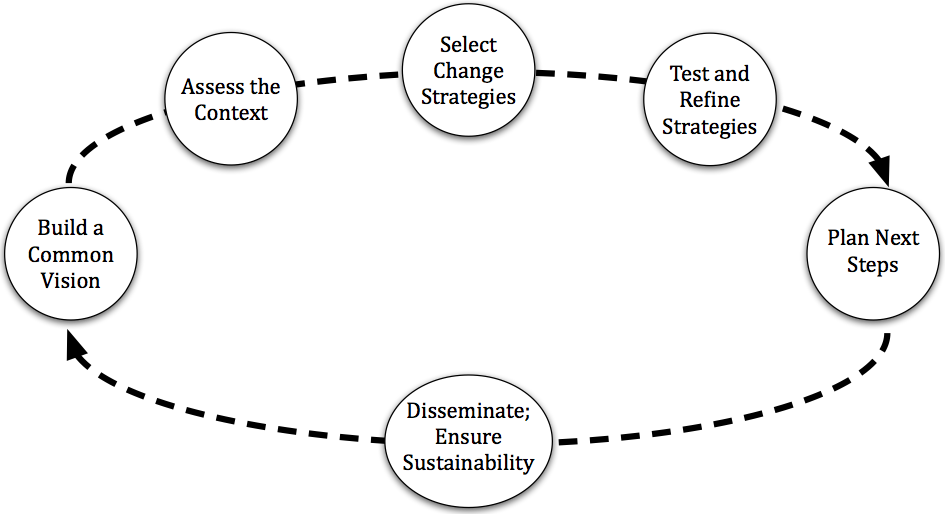In this section, we suggest practices or approaches that can be used to support the process of improving mathematics teacher preparation. Although making the changes needed to achieve the aspirational vision set forth in this document may be challenging, several frameworks have been developed to guide the implementation of a new set of recommendations. For example, Saul et al. (2008) presented the “Interactive Systems Framework for Dissemination and Implementation” to address the gap between research and practice in public health. Fixsen et al. (2005) described six levels of implementation based on a synthesis of research across multiple disciplines. Elrod and Kezar (2016) presented the “Model for Systemic Institutional Change” to support higher education leaders to guide change efforts in undergraduate STEM education. Taking a somewhat different approach, Bryk, Gomez, Grunow, and LeMahieu (2015) discussed the use of improvement science in networked communities to guide improvement in education, building on a body of work done in medicine.
These frameworks show that implementation is not a linear process but is more cyclic in nature while efforts are made to improve various aspects of the program. Figure 9.1 depicts the on-going and cyclic nature of successful improvement efforts, incorporating key elements found across the frameworks that should be considered while those involved with preparing teachers of mathematics work to implement the standards in this document.

Figure 9.1. The ongoing and cyclic nature of improving mathematics teacher preparation programs.
Brief descriptions of the key elements follow:
- Build a Common Vision. Mathematics teacher preparation programs need to engage all stakeholders in establishing a common commitment to the standards, including universities, colleges, school districts, and schools, to devote the resources necessary to progress toward meeting the standards.
- Assess the Context. Efforts to improve the preparation of teachers of mathematics need to begin with a careful assessment of the context, examining current policies, structures, and outcomes in light of the standards to determine what practices are effective and what changes are needed.
- Select Change Strategies. As specific ideas for change are identified, consideration should be given to how ready team members are to make those changes before they are implemented. The process of identifying possible areas for change should be viewed as an ongoing process.
- Test and Refine Strategies. When changes are implemented, relevant data need to be collected to determine their efficacy and indicate any further adjustments that may be needed. These adjustments should then be tested, forming a cycle of innovation aimed at improving practice while allowing for the setbacks and delays that may sometimes occur.
- Plan Next Steps. Constant reflection on the improvement process is needed to plan next steps and maintain its momentum. Next steps could include selecting additional change strategies or revisiting any other elements in the cycle.
- Disseminate. Learning from and with other programs will accelerate the change process. Therefore, programs need to share successful innovations with the broader community.
- Ensure Sustainability. Programs need to ensure sustainability and institutionalization of the changes that are made so that the necessary resources continue to be devoted after an initial period of innovation. Furthermore, changes cannot be so dependent on particular innovators that they fade if those innovators leave.
Depending on the grain size of the changes being made, this cycle may stretch from one or more semesters to several years.
